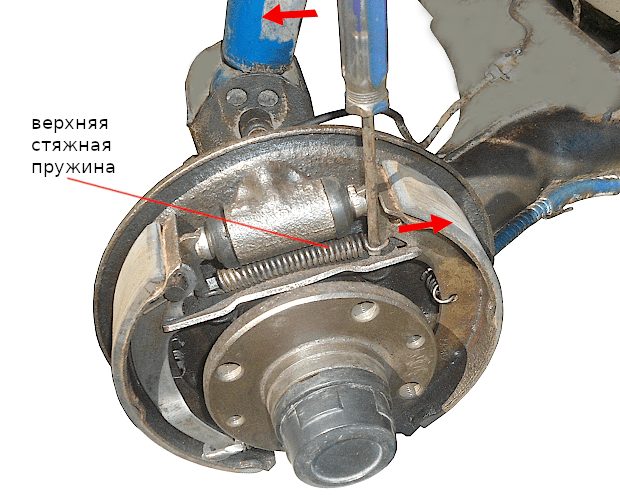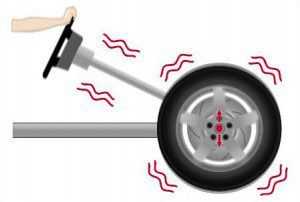
Brake vibration - brake pedal - steering wheel shaking. What is the reason?
 Surely many people know the situation when the steering wheel shakes while driving, and the wheels are balanced. Or, after pressing the brake pedal, you feel a vibration (pulsation) in combination with a shaking (vibrating) steering wheel. In such cases, the fault is usually to be found in the braking system.
Surely many people know the situation when the steering wheel shakes while driving, and the wheels are balanced. Or, after pressing the brake pedal, you feel a vibration (pulsation) in combination with a shaking (vibrating) steering wheel. In such cases, the fault is usually to be found in the braking system.
1. Axial asymmetry (throwing) of the brake disc.
A brake disc does not have the same longitudinal and vertical axis as the wheel hub on which it is mounted. In this case, the steering wheel shakes while driving, even if the brake pedal is not depressed. There may be several reasons.
- Overtightening set screw. The positioning screw is only used to set the correct position of the disc.
- Corrosion or dirt on the surface of the hub, resulting in an uneven seating of the hub disc. Therefore, before installing the disc, it is necessary to thoroughly clean (with a steel brush, cleaning agent) the surface of the hub or disc, if it is not new.
- Deformation of the charge itself, for example after an accident. Installing a disc on such a deformed hub will always result in vibration (vibration) in the brakes and steering wheel.
- Uneven wheel thickness. The brake disc may be worn unevenly, and various grooves, scratches, etc. may appear on the surface. When braking, the brake pads do not rest against the disc surface with their entire surface, which causes more or less intense vibration.
2. Deformation of the brake disc itself
The surface of the disc is corrugated, which causes intermittent contact between the disc and the brake pad. The reason is the so-called overheating. During braking, heat is generated which heats up the brake disc. If the generated heat is not dissipated quickly enough to the environment, the disc will overheat. This can be judged by the blue-violet areas on the surface of the disk. It should be borne in mind that the brake system of most ordinary cars is designed for normal driving. If we repeatedly brake hard on such a vehicle, for example, when going downhill quickly, braking hard at high speeds, etc., we run the risk of overheating - deforming the brake disc.
Overheating of the brake disc can also be caused by installing poor quality brake pads. They can overheat during intense braking, which leads to an increase in the temperature of already heavily loaded discs and their subsequent deformation.
Vibration of the steering wheel and a depressed brake pedal can also occur due to improper installation of the rim. Many aluminum rims are made for several types of vehicles (universal) and require so-called spacer rings to make sure the wheel is properly centered on the hub. However, it may happen that this ring is damaged (deformed), which means incorrect installation - wheel centering and subsequent vibration of the steering wheel and the brake pedal pressed.
